What does pho taste like? Asian cuisine now dominates the food market in every corner of the world since you can see it appears everywhere around you. And Vietnamese food, which is identified by pho, is evidence.
“How can someone refuse this holy treat?” Yes, pho is a mouth-watering and comforting delicacy you may ever have once you try it because of the legendary flavor. It really does live up to the compliments. If you are curious about the detailed flavor, join this post.
Here, not only will I give you the exact answer about pho taste, but also tell you much other useful information about this iconic Vietnamese dish.
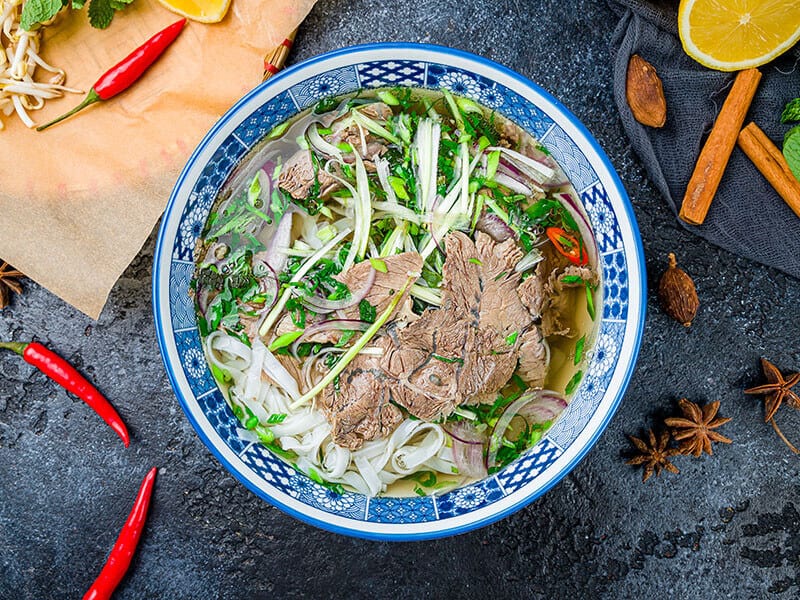
Table of Contents
Pho – Vietnamese’s Pride And Contention
Being a fan of pho, I know you will want to get to know more about this refreshing, comforting and fragrant food. Yes, pho has many interesting things, excluding the flavor. Let’s take a quick look at the section below for further information.
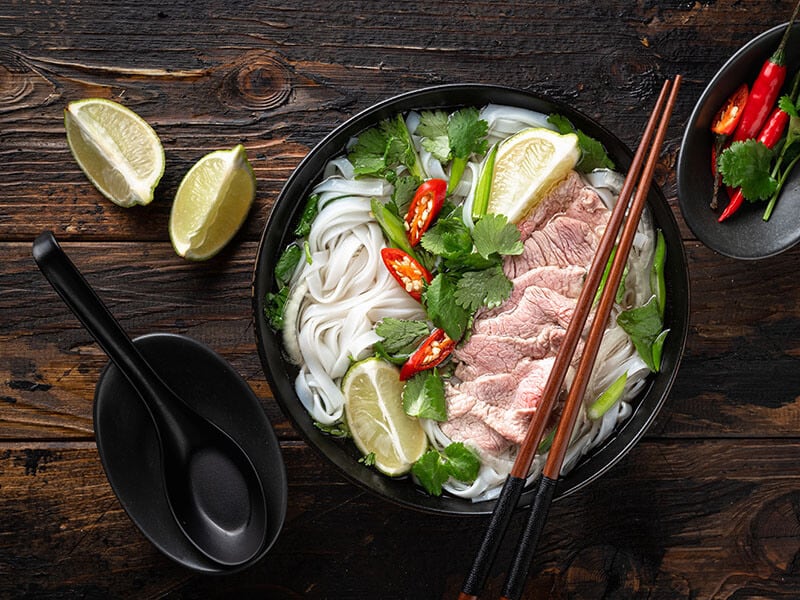
1. What Is Pho?
Vietnamese (and probably many Americans today) love to have pho in their breakfast, or even lunch and dinner year-round, especially at the time where the weather is starting to get colder and colder.
Pho, in Vietnamese called “Phở.” This humble dish is actually a steaming noodle soup made from beef broth, beef, rice noodles, and various kinds of herbs. Depending on the cultural differences and eating habits among regions, pho can be slightly adjusted.
Little is known about pho origin. Some people believe that pho originates from Hanoi – the Vietnamese capital, while it is said that pho was born in Nam Dinh – another Northern city in Vietnam where it is believed to be the place beef-eating culture comes from.
But back to the 20th century, when Vietnam recovered from the painful war, pho has become popular around this country. It can appear in a luxury restaurant, a small stall, or even on the roadside, where you can park your bike to take a bowl of pho.
If pasta almost makes up Italy’s cuisine, dumplings can be found throughout China; in Vietnam, pho is the soul, the contention, and the pride of this beautiful and resilient country.
2. How To Pronounce “Pho”?
When visiting a country, knowing the greetings is basic, but it is important to know how to pronounce a national dish of a country properly since it shows your respect and favorite at the same time.
Even though pho is an addictive item of many people worldwide, its name is sometimes mispronounced. People tend to end up the name by something like “toe” or “foe” since they are used to the way to spell English consonants that end up by an “o” (so, go, fro, etc.)
However, the Vietnamese language is very different. You might not mimic exactly, but the most precise pronunciation of pho should be “fuh.” In other words, your lower jaw should be pushed forward at the end of pronunciation.
Master the “pho” pronunciation in three minutes!
3. Different Options Of Pho With Toppings Served
The popular version of pho you are often served in America typically contains well-done tender beef. But you will be surprised that in Vietnam, pho sometimes is also categorized according to the beef toppings from different parts of a cow.
- Well-Done Beef Pho (Pho Chin): This is the basic version of pho, well-done tender beef (brisket, flank, or shank) with rice noodles.
- Medium Rare Beef Pho (Pho Tai): Well-done beef is replaced by medium-rare beef.
- Rare Beef Pho (Pho Tai Song): Rare beef is the key topping.
- Sauteed Beef Pho (Pho Tai Lan): Beef is sauteed then is added to the bowl of pho.
- Flank And Medium Rare Beef Pho (Pho Tai Nam): Mixed with two kinds of beef, consists of flank and medium-rare beef.
- Beef Flank Pho (Pho Nam): Only the flank of the beef is served.
- Beef Tendon Pho (Pho Gan): This pho version is for those who like beef tendons.
- Beef Ball Pho (Pho Bo Vien): As its name suggests, the only beef ball is added.
Aside from these versions of pho, it is possible to freely ask for the toppings you like. For example, you can order a bowl of pho with either well-done beef and beef balls inside.
Plus, in some places, there are other toppings for you to choose from, including poached chicken egg, quay (a kind of deep-fried strip of dough made from wheat flour and baking powder), and boiled beef blood.
What Does Pho – Vietnamese Famous Food Taste Like?
In the United States, pho is generally known for its fragrant, herby, and savory flavor. Nevertheless, in Vietnam, pho flavor is slightly different depending on the place it is made.
More exactly, Vietnamese Northern-style pho and Southern-style pho have some significantly unique flavors. Let’s scroll down to know more about them.
1. Pho’s Taste Is Much Depend On The Regions
Although coming up with various kinds of toppings, pho’s taste is often divided into 2 main varieties: Vietnamese Northern-style pho and Vietnamese Southern-style pho.
Vietnamese Northern-Style Pho – “Pho Bac”
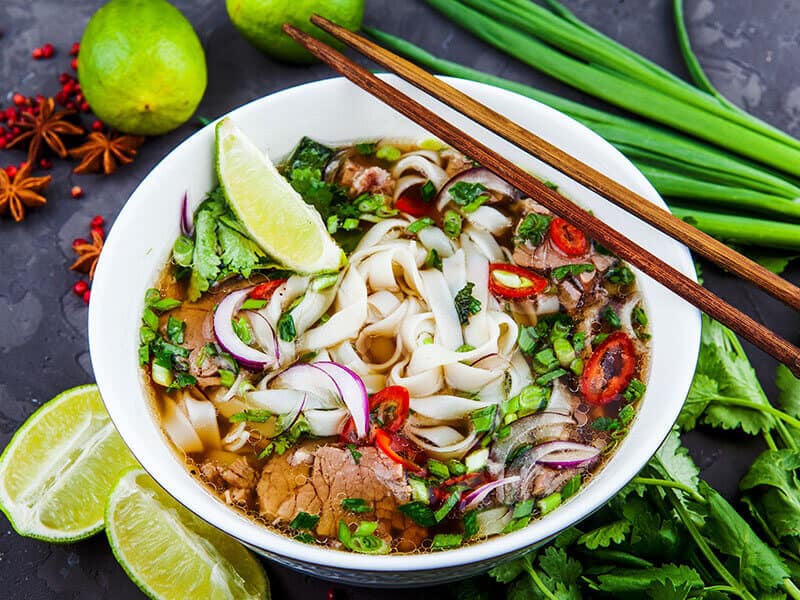
Once you try pho, you will realize that the soul of this holy food is its broth. The aromatic, craving, and the delightful scent will make you want to have another, another, and another bowl of pho the next time.
Basically, Vietnamese Northern-style pho is considered the authentic version of pho because the Nam Dinh villagers (where pho is believed to come from) bring their recipe to Hanoi to earn their living.
And when it comes to Vietnamese Northern-style pho, the broth will be mildly sweet and beefy with clear, light amber, and almost translucent color. The broth usually only includes beef bone and beef meat which brings up a slightly beefy flavor.
The flavors of star anise, cinnamon, clove, fennel seeds, coriander seeds, roasted onion, etc., are very balanced and dedicated. If you enjoy it slowly, each ingredient’s taste will be like a movie screen with the slow-motion effect – one by one is reflected on your mind.
Moreover, Vietnamese Northern-style pho has a stronger taste of green onions since people here love to add a lot of them to their pho. Thai basil also shows its face up on the top of the flat and wide noodles.
Also, the broth gives off a hint of sour and ginger which help to round out the flavor.
Vietnamese Southern-Style Pho – “Pho Nam”
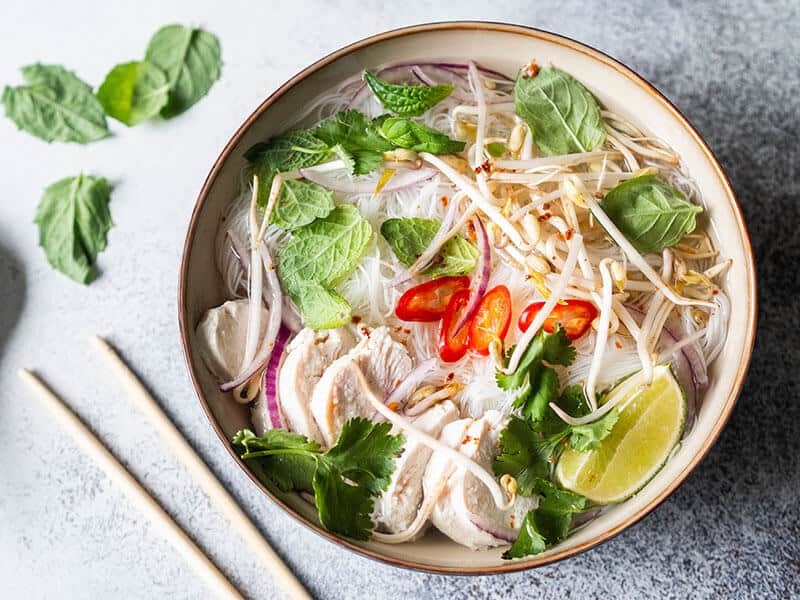
Vietnamese Southern-style pho is just like its owners, Vietnamese Northern people – sweet, easy-going, and diversifying. And because of cultural diversity, pho Nam will often come up in many recipes and versions.
In the South, rock sugar and white radish are often added to the broth. Therefore, Vietnamese Southern-style pho has a richer, and sweeter flavor compared to the savory flavor of Vietnamese Northern-style pho.
Due to many parts of the beef being utilized during the broth cooking, the broth is more intense, darker in color, and mostly doesn’t have a sour note like Vietnamese Northern-style pho.
When enjoying Vietnamese Southern-style pho, besides the traditional taste, you might end up with many other flavors since the toppings here are variegated. You will be served with a veggie plate (bean sprouts, Thai basil, cilantro, rice-paddy), resulting in a crunchy texture.
Moreover, hoisin and chili sauce are also offered. You can pour the sauces into the thin noodles directly or use them separately as dipping sauces for the beef or toppings.
So, does pho really live up to its popularity?
Other Varieties Of Pho You Might Not Know
Besides the two main kinds – Vietnamese Northern-style pho and Vietnamese Southern-style pho, there are many other kinds of pho. They are the result of regional and eating culture differences in Vietnam.
Vietnamese Chicken Pho – “Pho Ga”
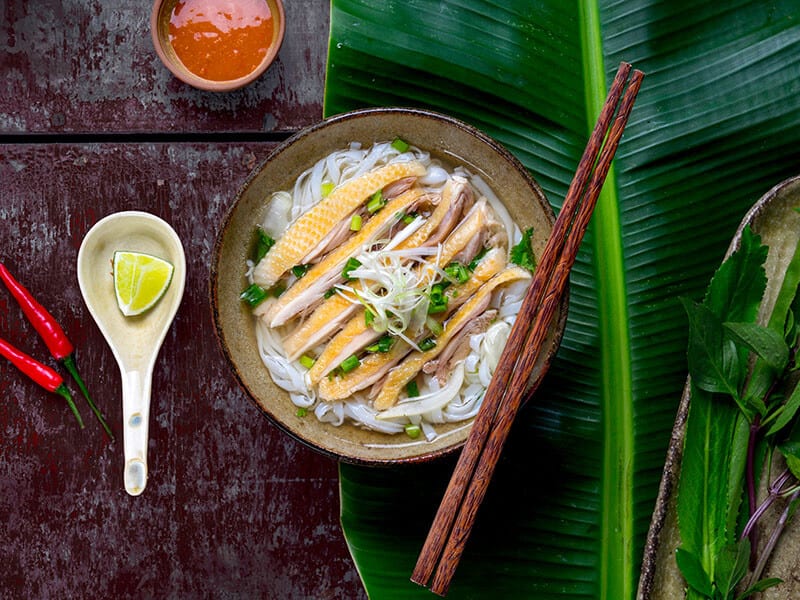
Though chicken pho is not widely available throughout the world as the classic beef pho, it still holds an important position in many pho lovers’ hearts. Appearing in 1939, chicken pho was born to meet the demand as beef was still considered a “luxury ingredient” at that time.
Unlike the traditional beef pho, chicken pho is made from chicken. The whole chicken is added to water and boiled until it is cooked. It seems less sharp and fragrant than the beef broth, right?
No, the broth is still really powerful because after the chicken is taken out, star anise, cinnamon, and other essential condiments will continuously be added and cooked for some more hours to get a flavorful taste.
The broth of chicken pho has slightly cloudy hay. It is just balanced and rich with a combination of salty, sweet, and herby flavors. And depending on your preferences, chicken pho can be cooked according to either the Northern or Southern style.
Vietnamese Stir-Fried Pho – “Pho Xao”
Stir-fried, is a dish in which thin and flat noodles are stir-fried with other meats and vegetable ingredients, including marinated beef (mostly), bean sprouts, spring onions, and onions. Furthermore, oyster mushrooms, juicy seasoned tofu, etc. may be added to enrich the flavor.
This kind of pho is commonly enjoyed throughout Vietnam too, but regularly served at lunch or dinner instead of breakfast. It has a noticeable note of smokiness since the noodles are often stir-fried in a very hot wok with the addition of dark soy sauce.
Stir-fried pho also has a sweet taste. However, depending on the regions, the sweetness level will be slightly adjusted too. Normally, Southern stir-fried pho will taste sweeter than the Northern ones.
On the other hand, due to being stir-frying, this pho will be a little bit oily than other kinds of pho. In turn, it is super tender, hearty and delicious. The presence of various vegetables makes the flavor not greasy at all when you put pho in your mouth!
Vietnamese Deep-Fried Noodles – “Pho Chien Phong”
As its name suggests, the cooking process of pho is largely associated with cooking oil. The small stacks of noodles are deep-fried in oil until they possess a crispy, bold yellow and eye-catching look.
Vegetables, beef, lettuce and broccoli then are stir-fried with a little water to create a syrup-like sauce. When the mixture of vegetables and sauce is added into the deep-fried noodles, the smell is freaking appetizing and satisfying.
The crispy, crunchy, brittle, and sweet flavor absolutely can mesmerize any diner.
Vietnamese Rice Noodle Roll – “Pho cuon”
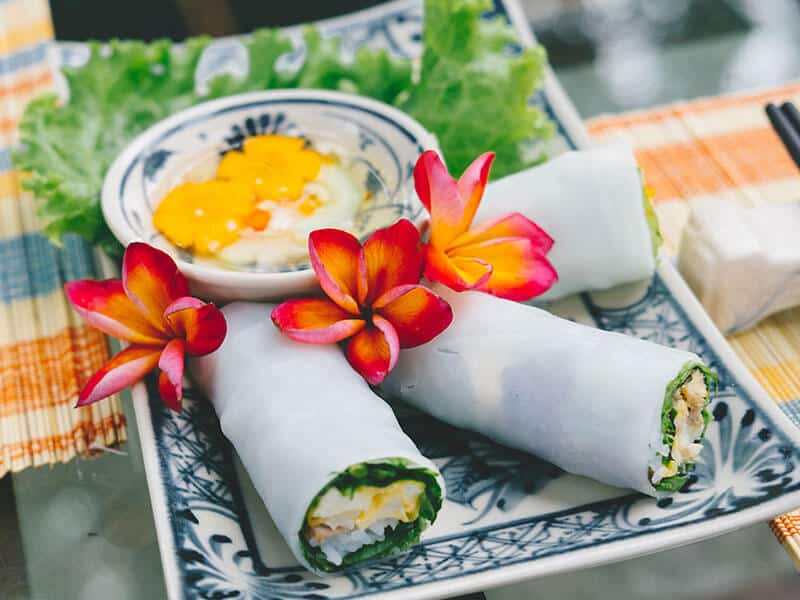
Instead of being cut into long strings, noodles remained in the square sheet form. Then, stir-fried beef and fresh vegetables are placed and rolled into the noodles sheet. Well, that is how rice noodle roll is made.
Not being put into oil, rice noodle roll is a healthier option for those who are on diets. The taste is very refreshing and fascinating. The chewy texture from the noodles, crunchiness from the vegetables, and slight sweetness from the beef is extremely craving.
And how can the sauce be missed out? It’s the soul of these rice noodle rolls! Saltiness, spiciness, sweetness and sourness – all of those flavors take this treat to divinely and incredibly level of enjoyment.
Remember to visit Hanoi. This city has the most authentic rice noodle rolls!
Nutritional Benefits Pho Brings Up To Your Health
Pho is a package of healthy ingredients. Since this dish contains a lot of herbs and vegetables, it offers you a wide range of nutritional values as well as health benefits. In particular:
- Ginger: Ginger can help to treat many forms of nausea, chronic indigestion, and osteoarthritis. Furthermore, it is also beneficial in weight loss, improving heart diseases, lower blood sugars, and the risk of infections.(1)
- Cinnamon: Cinnamon in pho may help you to improve gut health, relieve digestive discomfort, reduce blood pressure and blood pressure. You also can expect the anti-bacterial and antifungal properties of cinnamon in pho.
- Star anise: Star anise is known as a useful herb for skin health. It helps to improve digestion and the immune system. Moreover, it is also good for people with sleep issues.(2)
- Onions: Onions are famous for regulating blood pressure, risk of Alzheimer’s disease, lower cancer risks, heart disease, and stroke. Also, onions help to control diabetes.
- Cloves: Cloves contain a large amount of manganese (almost 55% of the daily value) and are high in antioxidants. It also helps to fight against cancer, bacteria, improve liver health, and control blood sugar. (3)
- Beef: The most dominant ingredient in pho is beef. This is a kind of red meat that is extremely rich in nutrients, such as protein which can help to build muscle; niacin, vitamins B6 and B12 for treating tiredness and fatigue, zinc for supporting hair health, etc. (4)
Excluding these benefits above, pho is also gluten-free food, which is a great choice for those who have celiac disease.
Make YourSelf An Authentic Bowl Of Pho
Making pho at home seems to be challenging for you due to the complicated flavor. But don’t worry, as long as you get all of the ingredients, everything will be in order. Pho, on the other hand, isn’t as hard to cook as you thought.
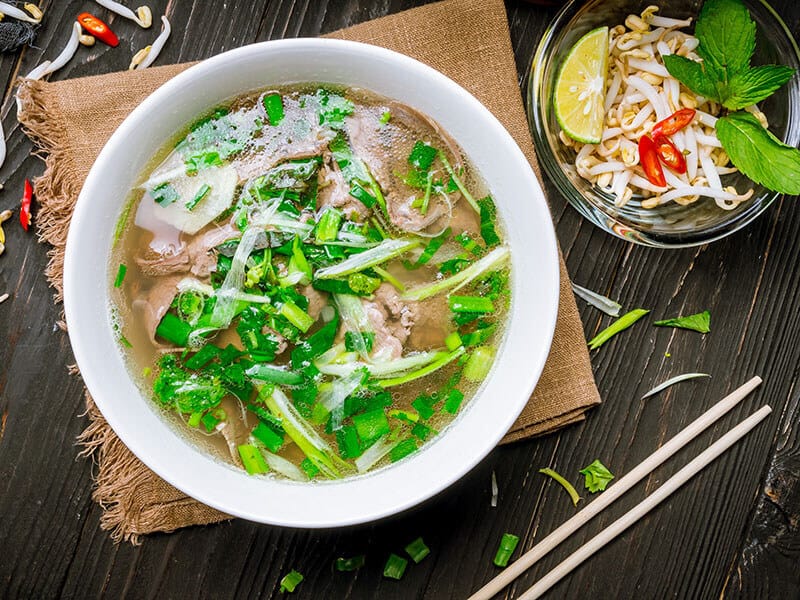
What You Need To Prepare
As I mentioned above, the broth is Vietnamese pho’s soul. Therefore, to have a delicious and aromatic bowl of pho, preparing enough spices is essential.
For The Broth
- 5 lbs beef bones (marrow bones is the best)
- 25 lbs beef cut (beef shank and beef brisket respectively is 1 lb and 1.25 lbs)
- 14½ cups of water (3.75 quarts)
- 1 tbsp salt
- 2-0.25 oz cassia bark
- 5-6 star anises
- 1-2 black cardamom pods
- 5-7 cloves (finely crushed)
- 2 tsp fennel seeds
- 1 tbsp coriander seeds
- 2 yellow onions (half-sliced with skin-on)
- 2 ginger pieces (halved lengthwise)
- 4-5 average-size shallots
- 1 tbsp fish sauce
- 1 tbsp rock sugar
For The Bowl
- Beef fillet (tenderloin or sirloin, thin-sliced)
- Black pepper
- Cilantro (thin-sliced)
- Scallion (green part/thin-sliced; white part/shredded)
- 1 yellow onion (paper thin-sliced)
- Rice noodles (cooked by boiling)
For The Veggie Plate (Optional)
- Bean sprouts
- Culantro
- Thai basil
- Sliced chili
Try to make pho yourself. It deserves all of your efforts!
What You Need To Do
Now, as long as you follow the following instructions, a delicious bowl of pho is not out of your league. This dish needs you to be very patient; but you will know later, all the effort is absolutely worth it.
For The Broth
Step 1: Blanch beef bone first in boiling water (about 10 minutes). Take the bone out and rinse it carefully. By this way, your broth will not be too cloudy.
Step 2: Boil a pot of 3.75 quarts of water. Then, add the bones with salt and ginger to the boiling pot.
Step 3: Remove the foams, reduce the heat to a simmer, and cook for about 6-8 hours.
Step 4: At the same time, blanch your beef (brisket and shank) in another pot by boiling them for some minutes. Rinse the beef as you do with the bone.
Step 5: Add the rinsed beef to the broth. Continuously simmer together with the bone.
Step 6: Take the beef out when it reaches the tender level you want (around 2-3 hours for beef brisket, and 1.25-1.5 hours for the beef shank.)
Step 7: Blacken onions, ginger, and shallots on a pan without oil (approximately 15 minutes) for about 2.5 hours before turning off the heat of the broth pot.
Step 8: In a stove, adjust the heat to medium. Then, add the spices (cassia bark, star anises, cloves, coriander seeds, fennel seeds, and black cardamom pods) in a bag and toast until they give off an aromatic scent (120-180 seconds.)
Step 9: In the broth pot, remove the floating fat, put the onion, ginger, shallot, and the bag of spices into the pot. Continuously simmer for approximately 2 hours.
Step 10: At the end of simmering, remember to add more water as the broth is evaporated (then bring the broth to a boil again.)
Step 11: Turn off the heat, add an extra amount of salt to the broth. Then, season the broth with rock sugar and fish sauce to round out the flavor.
For The Bowl
Step 1: Put the rice noodles into the bowl.
Step 2: Take out the beef (brisket and shank). Slice them thinly and put them on the top of the noodle.
Step 3: Add scallions, black pepper, and cilantro to the bowl.
Step 4: Ladle the beef broth into the noodle bowl. Serve with the veggie plate (optional), hoisin sauce, and chili sauce right away to get the best taste.
Eating Advice: How To Eat Pho Properly?
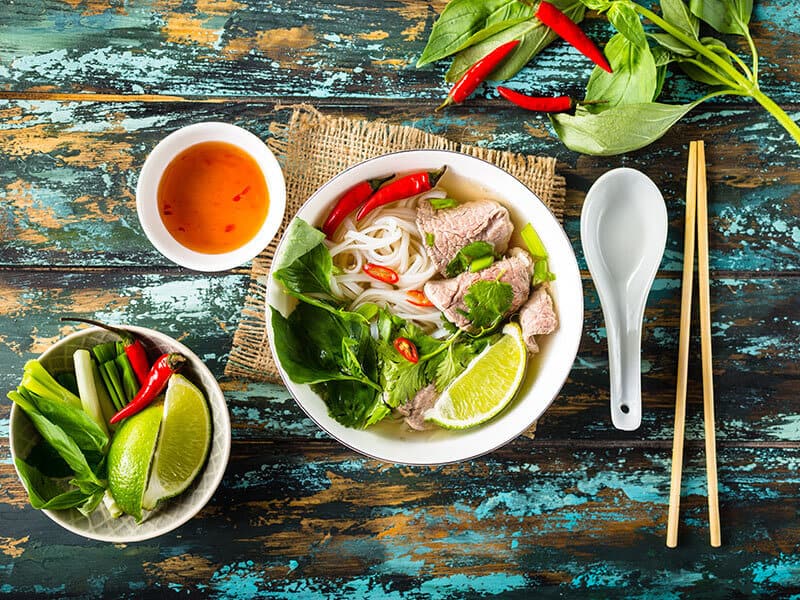
I guess many of you are just new to this dish. Take a glance at these tips below; they will guide you on the way to enjoy pho properly with the best experience.
Get Used To With The Chopsticks
If you have known how to use chopsticks before, just learn it right now. Pho’s taste is always better when you enjoy it in the traditional way. The feeling will be very different compared to when you use a fork.
Start With The Veggie Plate
Most Southern-style pho restaurants will serve a plate of veggies next to your bowl of pho.
Take out the Thai basil, harvest the leaves, and put it in the bowl. Then divide the cilantro into small pieces and add them into the bowl together with bean sprouts.
Enjoy The Broth Directly From The Bowl
Eat pho like a child. Although a spoon can be used while eating, the best way to enjoy the remaining broth after finishing all the noodles and toppings is to drink it right from the bowl. Raise the bowl with both hands and take it close to your mouth; slowly drink all the broth.
Note: Eating the whole bowl of pho without anything left is the way to show your favorite and let the cooks know you are really enjoying their food.
Discover more tips ìn eating pho so you won’t get confused on the first try!
What You Will Want To Know About Pho
Pho is much more interesting and complicated than you have ever known. It is far beyond a noodle soup. Let’s jump into this part to get more insights about pho.
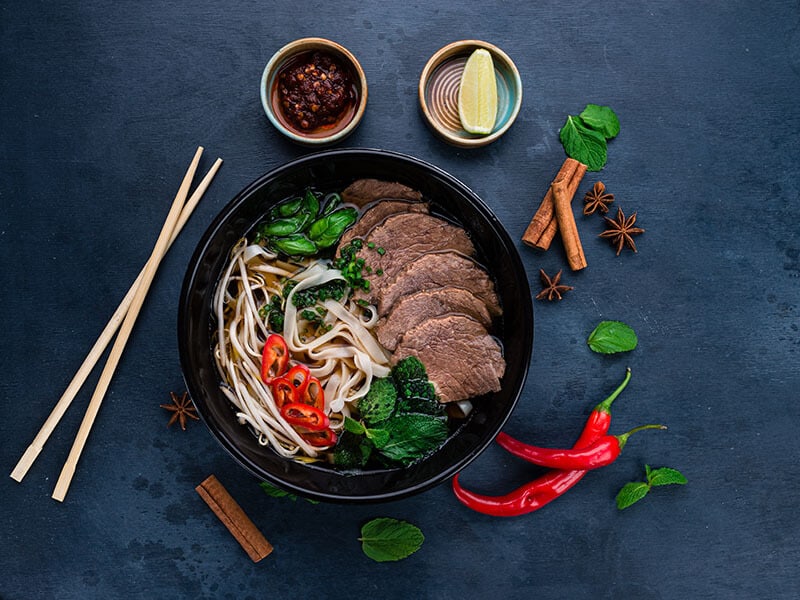
- In September 2007, because of its popularity, pho was officially added to the Shorter Oxford English Dictionary as a characteristic Vietnamese food instead of being labeled as a kind of Asian noodle soup.
- Pho was brought to America by Vietnamese refugees after the disastrous war in Vietnam. And you can see the most popular pho served in America is the Southern-style pho with sprouted beans and various kinds of herbs.
- Pho is one of the most popular Asian dishes which is favored among Americans. Currently, nearly 2,000 Vietnamese pho restaurants have been opened across America and Canada.
- In the past, beef was not a popular meat product eaten in Vietnam. When Vietnamese used beef bone and beef to make pho, the use of beef also started to become more common.
- The origin of pho remains controversial. Some theories suggest that pho was inspired by French or Chinese cuisine. On the other hand, some Vietnamese believed that pho was completely Vietnamese rooted.
Pho Vs. Ramen: Are They The Same?
In nature, pho and ramen are classified as a kind of noodle soup. Nonetheless, they are completely distinctive in flavor since the ingredients are very different.
While pho’s broth is mainly made from beef and beef bone, ramen’s broth is more varied. Based on each region, the broth can be made from pork, chicken bone, miso, etc.
While pho mostly only has beef (or chicken) inside, the toppings in ramen sometimes include pork, eggs, and nori (dried seaweed).
The meat in pho is thinly sliced instead of thickly sliced like the meat in ramen. Additionally, compared to pho, ramen has a more intense flavor. Also, the noodles are different as well. Vietnamese people use rice noodles in pho, while Japanese people prioritize wheat noodles.
Pho vs. ramen – What do people say about them?
FAQs
Pho is a complicated food. So, it is understandable that you might have some other questions that need to be answered. Check these frequently asked questions below to find out the answers.
Pho – The Humble But Aromatic Noodle Soup
Believe me! Once you have a chance to try pho, you will never want to let it be out of your daily menu. The fragrant, herby, and beefy flavor is so healthy and refreshing. Being labeled as the Vietnamese “national dish,” pho always lives up to its compliments.
Even the pickiest diners will love pho. I guarantee. And if you still are skeptical, go for it now. Remember: Pick the authentic Vietnamese restaurant. All delicacies always taste their best in the places where they come from.
For now, what I only hope is to see your opinion in the comment section below. It would be great to hear all of your comments as well as memorable experiences with this soup.
References
- Joe Leech. 11 Scientifically Proven Health Benefits of Ginger – Healthline.
- John Staughton. 9 Surprising Benefits of Star Anise – Organic Facts.
- Rachael Link. 8 Surprising Health Benefits of Cloves – Healthline.
- Six health benefits of eating beef – AHDB. Ahdb.org.uk.


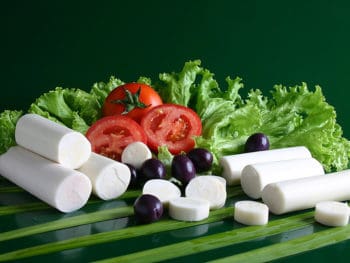




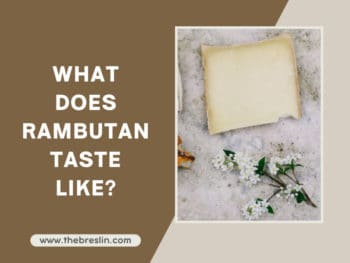

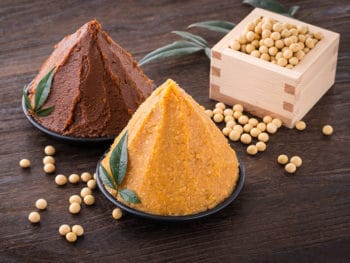
 What Does Octopus Taste Like?
What Does Octopus Taste Like?